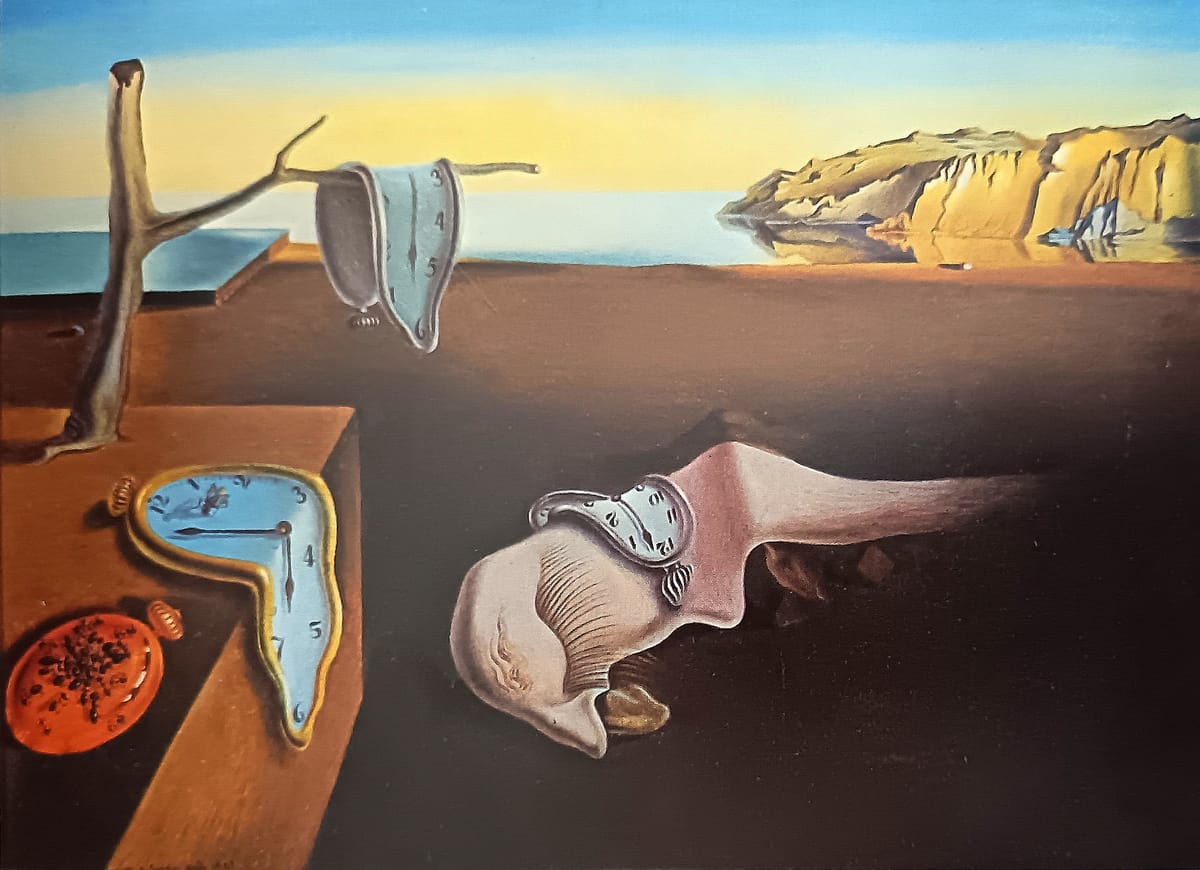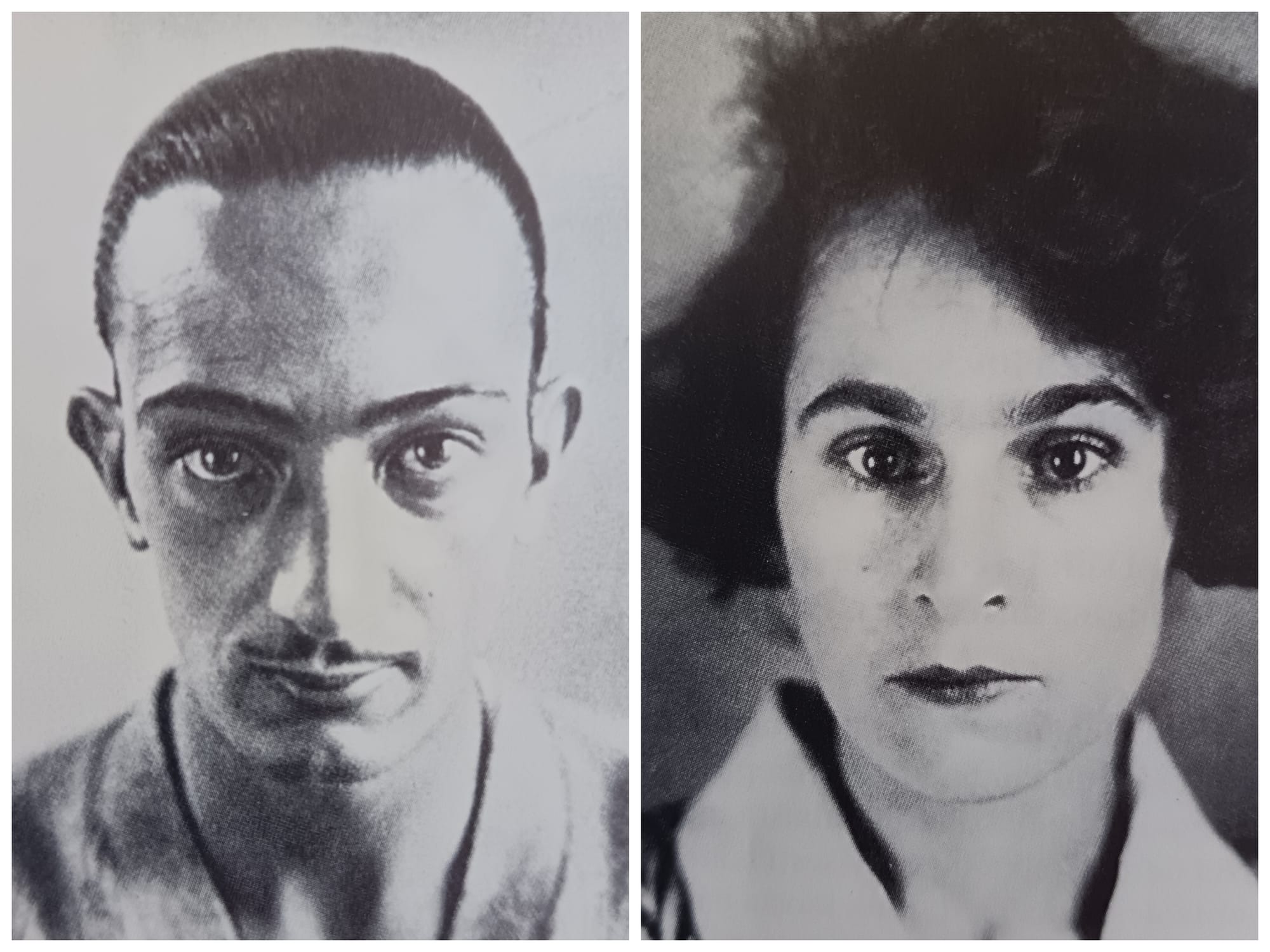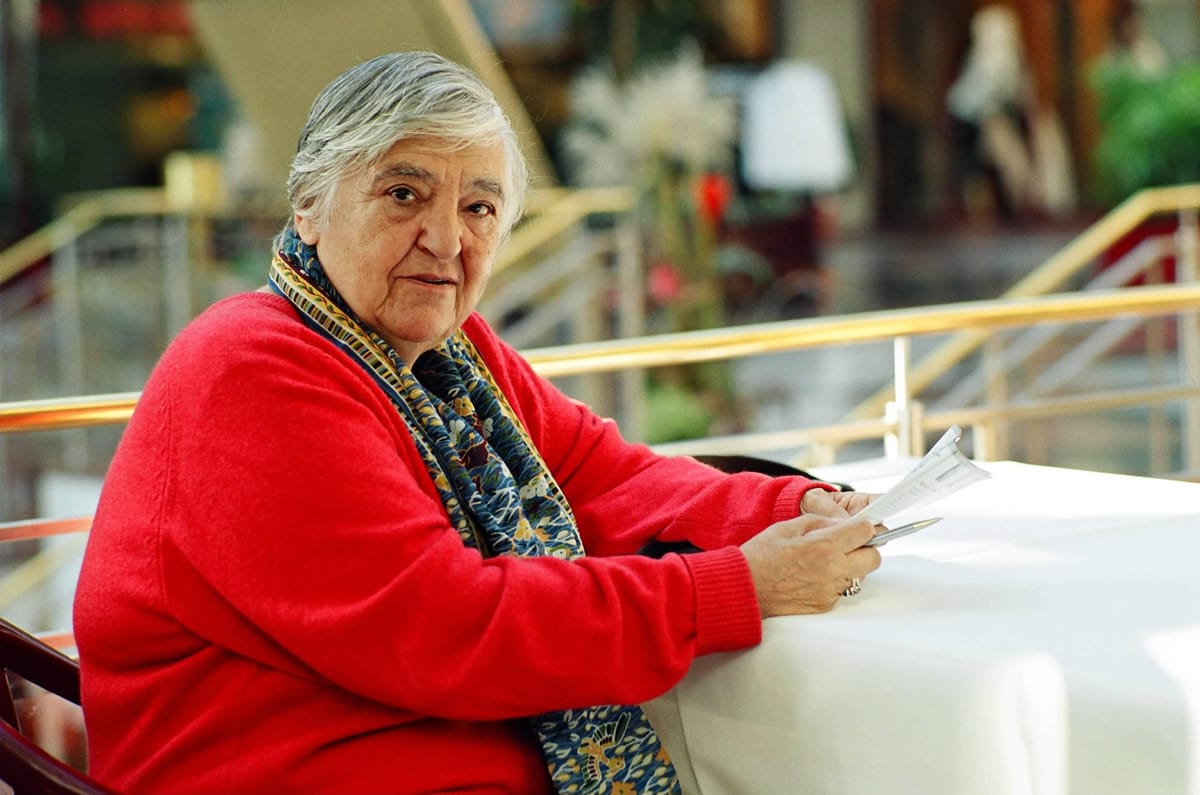Salvador Dalí’s The Persistence of Memory: Behind the Scenes
Salvador Dalí’s The Persistence of Memory was born from the heat of a Catalonian summer and the depths of his surreal mind. Discover the story behind this timeless masterpiece.

Imagine standing on the rocky shores of Port Lligat on a scorching August afternoon in 1931. The sun hovers high above, baking the earth, turning the cypress trees into sharp, dark silhouettes against the cobalt sky. The Mediterranean sparkles with a dazzling intensity, but inside the small, whitewashed studio, the air feels different. The atmosphere is dense, almost suffocating, with the scent of linseed oil and turpentine clinging to the warm, salty breeze that drifts in through the open window.
There, amid a jumble of sketchbooks, easels, and half-finished canvases, Salvador Dalí leans over a small, unassuming canvas that would soon defy time itself. Sweat beads on his brow as he meticulously adds the finishing touches to a bizarre landscape where nothing is solid, where clocks melt like soft cheese over the barren branches of a tree. The silence in the room is broken only by the faint scratching of the brush and the occasional murmur from Dalí as he talks to himself in rapid Catalan, his mind wandering through dreamscapes far removed from the sunlit coast outside.
A New Frontier for Dalí’s Vision
Dalí, always obsessed with the passage of time and its maddening constraints, found himself at a crossroads. His career, already peppered with successes and scandals, was about to take a turn that would change his life—and the world of art—forever. As he carefully blurred the edges of his melting clocks with delicate strokes of his brush, he thought of Einstein’s theory of relativity, the recent discoveries in quantum physics, and Freud’s writings on the subconscious. Time, memory, and reality itself were bending and warping in ways that felt as surreal as his visions.
The artist’s muse, Gala, floated in and out of the studio, a spectral figure in a flowing, linen dress. She watched silently, sometimes offering a word of encouragement, sometimes merely existing like a serene phantom who inspired his every motion. To her, this was Dalí’s genius at work—a brilliance balanced precariously on the edge of madness. But even she couldn’t have known the impact this small canvas would have on the world.

The Completion of a Masterpiece
With a final, satisfied sigh, Dalí stepped back, gazing at his creation—the landscape of his inner mind laid bare for all to see. The distant mountains, the amorphous shapes of the melting clocks, and that strange, faceless figure draped over the rocks—was it a self-portrait? A symbol of decay? He couldn’t say for sure, but he knew it was more than just a painting. It was a rebellion against the tyranny of time, a visual riddle that invited the viewer to question their own perception of reality.
Dalí’s surreal creation, later christened The Persistence of Memory, would soon leave his studio and make its way to Paris, and then across the Atlantic to the bustling streets of New York, where it would become the jewel of the Museum of Modern Art’s collection. Art critics and enthusiasts would marvel at its dreamlike quality, the sheer strangeness of it. But for Dalí, it was more than a masterpiece—it was a declaration. A statement that reality, time, and memory were all illusions, twisting and melting in the heat of human experience.
Behind the Melting Clocks
Years later, when asked about the melting clocks, Dalí would say they were inspired by nothing more profound than the sight of a runny Camembert cheese slowly losing its shape in the Spanish sun. But anyone who has stood before The Persistence of Memory, entranced by its eerie beauty, knows that such simplicity is only a fragment of the truth. Because in that small studio, amid the smell of salt and oil, Dalí captured something both fleeting and eternal—an image that persists in our collective memory, reminding us that time, for all its rigidity, is just as fluid and surreal as a melted watch dripping from a tree branch.
And there it sits, in its timeless state of decay, preserved behind the cool glass of a museum frame, inviting each new generation to step into Dalí’s world, where time has no power and memory is forever malleable. A world that blurs the line between dream and reality, just as the melting clocks blur the boundary between solidity and dissolution. The small painting that emerged from that sultry summer day in 1931 is now a legend, an enigma, and above all, a testament to the limitless possibilities of the human imagination.
Gala’s influence on Dalí was undeniable. Though she did not play a direct role in The Persistence of Memory, she was a constant source of inspiration and stability in Dalí's often chaotic life. Her presence hovered over his work, much like the strange figures in his paintings, both grounding and unsettling him. Later, her image would be immortalized in many of Dalí's works, but here, in this masterpiece of surrealism, she is an unseen muse, a silent force behind the madness.
ART Walkway News
Related Stories:









